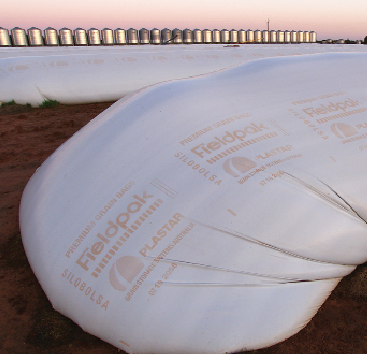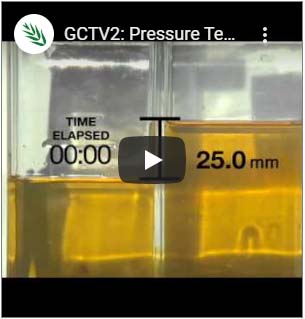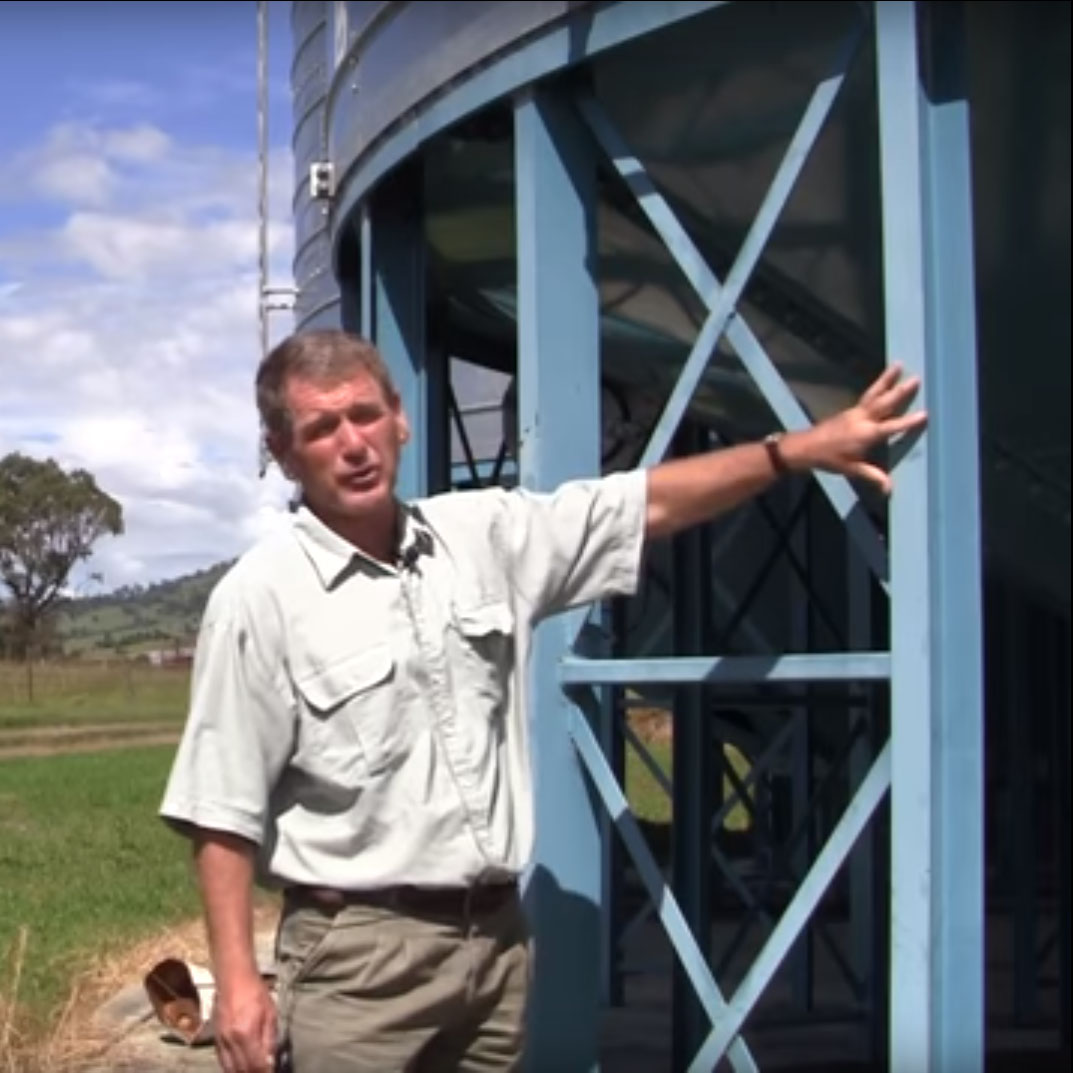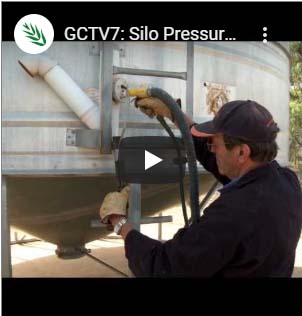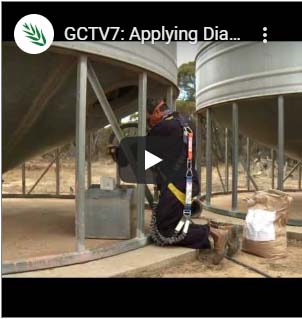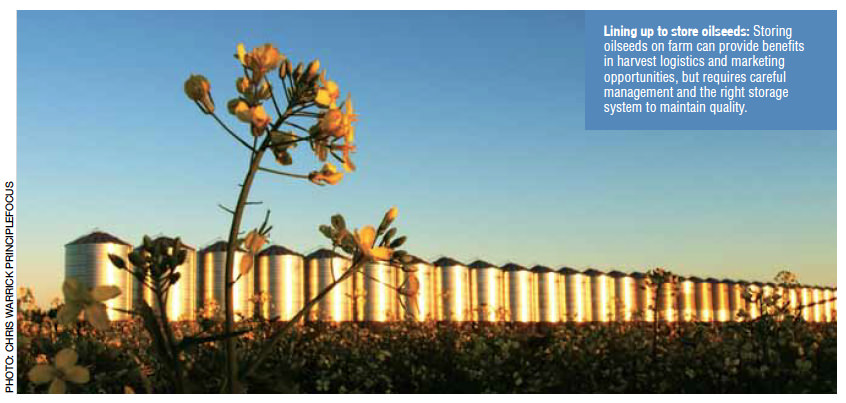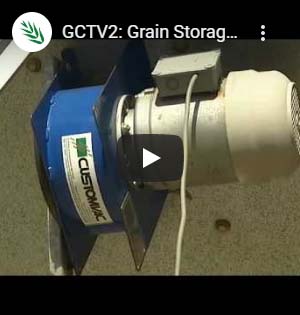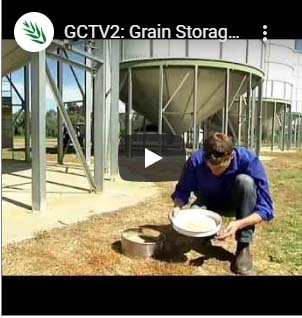Bulk grain bags, also known as Silo Bags, can be a handy harvest storage option if used properly. A planned approach with careful management is essential.
KEY POINTS
- Grain bags are best suited for short-term, high-volume grains to assist with harvest logistics.
- Site planning and preparation is the first and most important step for successful storage.
- Bulk grain bags are a higher risk form of storage compared with silos — requiring experience and best management practice.
- Inspecting grain bags weekly, or more frequently, and patching holes will reduce the chance of spoilt grain from moisture or pests.
Bulk grain bags are best used for short-term storage (a few months maximum) to support harvest logistics.
Storing grain for longer periods requires:
- Prior experience
- A carefully prepared site
- A method of sampling grain for quality monitoring
- Regular inspections.
The capacity of grain bags varies with bag size, which generally ranges from 40 to 90 metres long, and anywhere from 100 to 300 tonnes depending on the type of grain and how much the bag is stretched during filling.
The material most commonly used for grain bags is a three-layer polyethylene — two white layers to protect against the ultraviolet rays and reflect heat and a black inner layer to block light.
Which grains?
Due to their short-term storage capacity and suitability for supporting harvest pressure, growers tend to use grain bags primarily for extending existing storage during high-yielding seasons of typically wheat, barley and sorghum.
Aeration cooling is not yet proven with grain bags. Storing canola or high-value legumes is not recommended.
Cereal grain quality is best preserved when the moisture content is below 12.5 per cent. Storing grain at higher moisture content in bags not only compromises grain quality but increases the risk of grain swelling and splitting the bag.
Being unable to aerate bags and having a large surface area exposed to heating from the sun means grain remains warm for months after harvest. This can affect seed germination rates and malt barley quality.
Storing grain at harvest temperatures of 30°C and above favours high insect reproduction rates, so take extra care with hygiene and monitoring.
Bulk grain bags are an effective form of storage when used in the right situations and when they are managed correctly.
Buying grain bags
- Test bag quality by pushing your thumb through an edge of the bag — you will be able to make a subjective judgement as to whether it is high or poor quality. Test different brands before you buy.
- Ensure the bag is UV stable for 12 months and complies with the ISO 9001 quality management system.
- Make sure the bag has stretch indicators for accurate filling.
- Ensure the grain bag is designed for grain not silage — different bags look similar and can be confused leading to disastrous results.

Choosing a site
- Appropriate site selection is the first and most fundamental step in successful grain bag management.
- Placing bags in different paddocks makes filling direct from the harvester or chaser bin easier but increases maintenance and monitoring time. This can compromise grain quality.
- Bags located in individual paddocks can be challenging in wet weather.
- A central, common storage site for bags is ideal for easier site preparation, monitoring, bag maintenance, vermin control and out-loading.
- Select a hard, smooth, elevated site with a gentle slope where water can drain away.
- Allow plenty of room around the grain bags for machinery access and trucks to turn around.

Preparing the site
- Grade and roll the site, removing sticks, rocks or sharp objects.
- Clear, firm ground makes operating the filling and emptying machines easier with less chance of brakes skidding.
- A firmly-rolled site helps drainage and prevents water pooling where the grain bag has sunken into soft ground.
- Anything that can puncture the bag is a threat and must be removed. Set up the site away from rocks, sticks, trees (they drop branches and harbour birds) and away from sand hills or long grass where rabbits, mice and foxes shelter.
- Anecdotally, a thin sprinkle of urea can be spread on the ground where the bag is to be laid to deter mice from burrowing under it.
Setting up the filling machine
The most common filling machines are power take-off (PTO) driven, forcing grain into the bag, stretching it by about 10 per cent as it’s laid. A more recent development is the gravity filling design, which requires no power or tractor to operate and relies purely on gravity to fill and stretch the bag.
Make sure the machine is clean before filling the bags.
Grain pests, such as weevils and other insects, can survive in small amounts of grain left in equipment from the previous season. If the machine is not clean, these pests can infest the new season’s grain and will multiply and spread through the entire grain bag
Fitting the bag onto the machine with two people saves time and reduces the chance of injury. When setting up the bag on the filling machine, ensure the stretch markers are on a side where they can be seen and measured when the bag is filling. Once filled, any holes in the bag will allow grain to absorb moisture from the ground.
Options include:
- sealing the ends of the grain bag with a heat sealer, or
- clamping the ends between two lengths of timber or steel, rolling each end around the timber then tucking the bag under itself with about a metre overlap.
The squarer the starting end of the bag, the easier it is to empty with less shovelling — a cable tie around the end is NOT a good idea.
Before filling the bag, use a string line to mark a straight path along the full length of the bag. A straight bag is a lot easier to empty than a curved bag.

Filling the bag
Patience and accuracy during filling will make emptying the bag much easier, reduce maintenance on the bag during the storage period and result in less spills and fewer stops to realign machinery.
- Keep the bag filling evenly and straight to avoid creases — mice tend to attack creases.
- Adjust the brakes and direction often and in small increments.
- Avoid over-filling (over-stretching) the bag as extra strain makes it more prone to holes, splits and tears.
- Remember, the polyethylene bags will stretch more easily when filled with warm grain on hot days.
- Bags can be filled straight from the harvester, but operators may be tempted to rush, which leads to a poor job and increases the risk of an accident. (ie damage to machinery or operators).
- Stop filling the bag while there is still plenty of bag to seal and re-attach to the emptying machine — about four metres is a good rule of thumb.
- As with the starting end, heat seal or clamp the bag end to keep moisture out, then tuck the excess bag under itself and cover with soil to stop it flapping in the wind.
Site security and maintenance
Site security starts with hygiene. Cleaning the site after filling will not only remove harbours for grain insects, it will remove feed that attracts mice and wildlife. After cleaning up around the site, establish mice baiting stations along the length of each bag and put up signs to warn people of the poison.
Keep the site free of grass by spraying it regularly to remove cover for mice and wildlife. A sturdy fence, even an electric fence, around the bags can help prevent animals accessing the bags and chewing or walking on them. Even if there are no livestock in the paddock, remember there is always the potential for stray livestock or wild animals to cause a lot of damage in a short time.
Checking as often as twice daily may be required if vermin are plentiful during wet weather. During normal conditions check at least weekly. Patch any tears or punctures with quality tape or silicone to prevent moisture entering the grain bulk.

Emptying the bag
When making the initial cut in the bag for out-loading, place a piece of tape horizontally across the bag below where it is stretched tight at the top. Make the first cut perpendicular to the bag just below the tape. Do not make the cut parallel to the bag as there is potential for it to split up the entire length of the bag, exposing the grain and making it difficult to pick up.
As previously stated for filling the bag, frequent, small adjustments to align the machine and roller speeds are better than large adjustments. When the bag is almost empty and there’s not much weight left in it, the unloading machine may drag the bag towards itself. This can cause tears from the ground or from over stretching. To prevent this, drive the tractor slowly backwards as the last bit of the bag is emptied.
Clean up
Clean grain residues from machinery used for grain handling to prevent reinfestation with insect pests next season. Structural treatments are a wise addition to a thorough clean down.
An inert dust such as diatomaceous earth (DE), can be blown into the machinery to prevent insects harbouring during the off season.
Site clean-up is vital for success. Spilt piles of grain and leftover small bags of grain provide an ideal harbour for insects to live and breed.
Safety around grain bags
Filling and emptying grain bags poses a number of safety hazards, exacerbated by the fact that during harvest people are usually tired and in a hurry. Always follow machinery manufacturer instructions and consult your State occupational health and safety authority for advice.
- Treat all operating machinery with respect — keep a distance from machines and always have room to take a step away if needed.
- Think before you make any adjustments or movements on machinery.
- Ensure anyone on-site is standing clear of the filling machine and tractor before adjusting the brakes as it can lurch forward at any time. Making small adjustments reduces the risk of the machine lurching.

